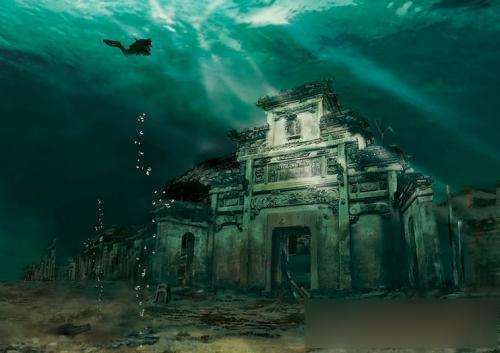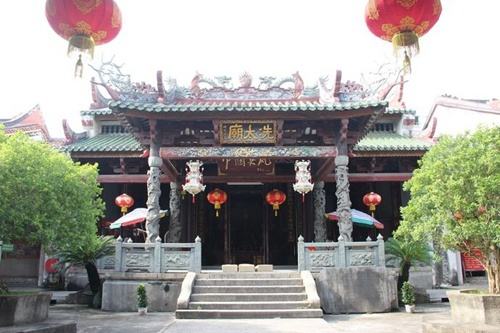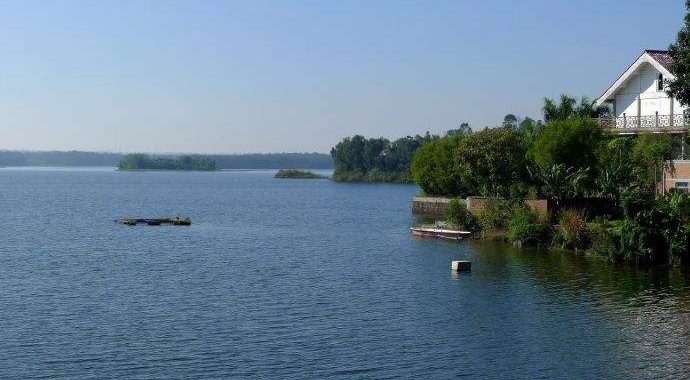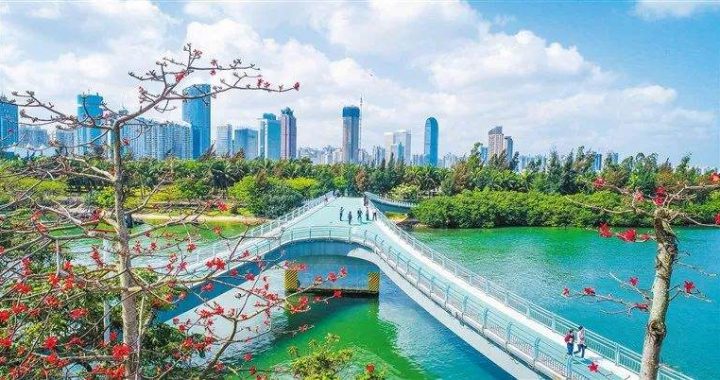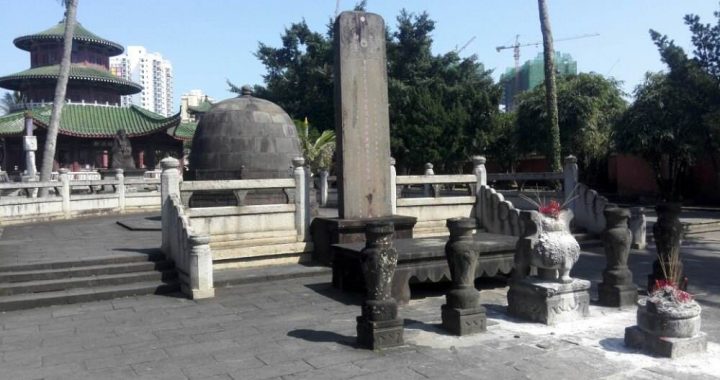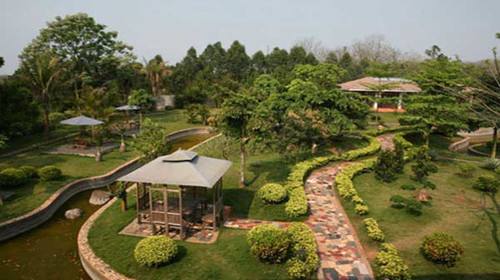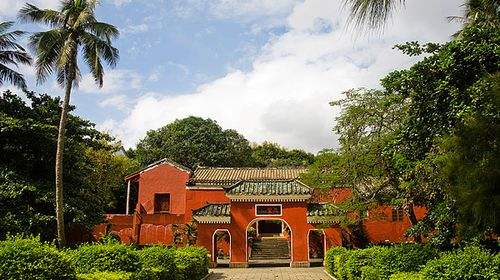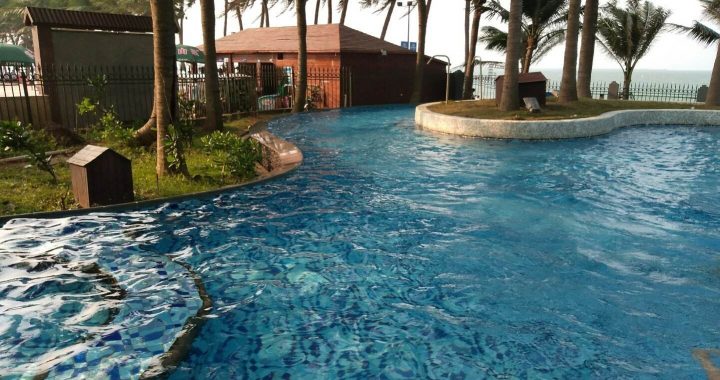Dongzhaigang National Nature Reserve for Mangrove Forest
4 min readThe Dongzhaigang National Nature Reserve is located in Dongzhaigang Bay bordering the administrative regions of Qionghai City and Wenchang City,in northeastern Hainan Province,and covers a total area of 4,000 hectares along 50-kilometer coast.The areas surrounding Dongzhaigang National Nature Reserve are mostly farmlands,salt pans,aquaculture ponds and forestry plantations.Dongzhaigang National Nature Reserve has good transportation infrastructure and communication facilities.The location of the reserve administration office is only 30 km from the provincial capital city of Haikou and 10 km from the Haikou Meilan International Airport.
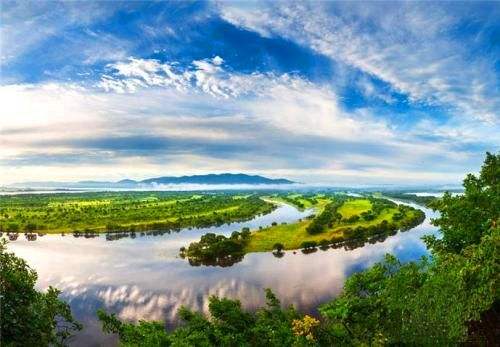
The area trans-bounds the tropical and sub-tropical zones of southern China and has a correspondingly diverse transitional fauna and flora with the southern sub-tropical species dominant.The transitional climatic and hydrological conditions,specific topographic features(estuarine ecosystems)and its rich biodiversity ensure its global significance as a wetland of international importance.Its relatively large area of mangrove forest and mudflats provides migratory water birds and fish with rich feeding grounds and breeding habitats.The Dongzhaigang National Nature Reserve has drawr national and international attention since its establishment.Specialists and experts from many countries have visited the Reserve.In 1992,it was listed in the International Important Wetland Treaty.The whole landscape mainly was the Sea of Forest Park, Wild Pineapple Island and the Benthonic Villages. Whats more, there are riches of birds and aquatic products. And the environment is very beautiful.
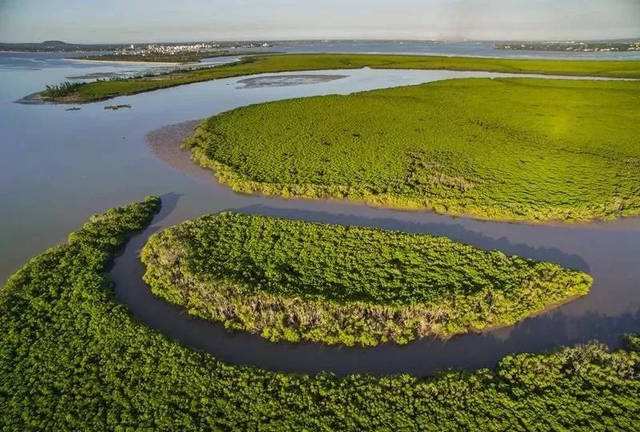
The Dongzhaigang National Nature Reserve has a tropical monsoon marine climate with an average annual rainfall of 1,676.4 mm and a mean annual temperature of 23.3-23.8oC. The mean temperature in July is 28.4oC and in January 17. loC. The rainy season starts in early May and ends in late October. The region is usually affected by typhoons during the summer months. There are four rivers entering into the Dongzhaigang Bay, and they are Yanzhou River, Sanjiang River, Yanfeng River and Xi River, with a total water discharge of 700 million cubic meters. During the rainy season, the four rivers carry large amounts of silts which are largely deposited within the bay tocreate the extensive inter-tidal mudflats. It is the mudflats that providea suitable environment for mangrove growth in this area.
Historically Dongzhaigang Estuary was more forested than it is today. In the early 1950s,3,414 hectares of mangrove forest was recorded, and this was reduced to 1,773 hectares by the 1960s and 1970s due to intensive agricultural reclamation and mangrove forestry operations. Through annual replanting program and the cessation of logging operations the area of mangrove forest has been increased.
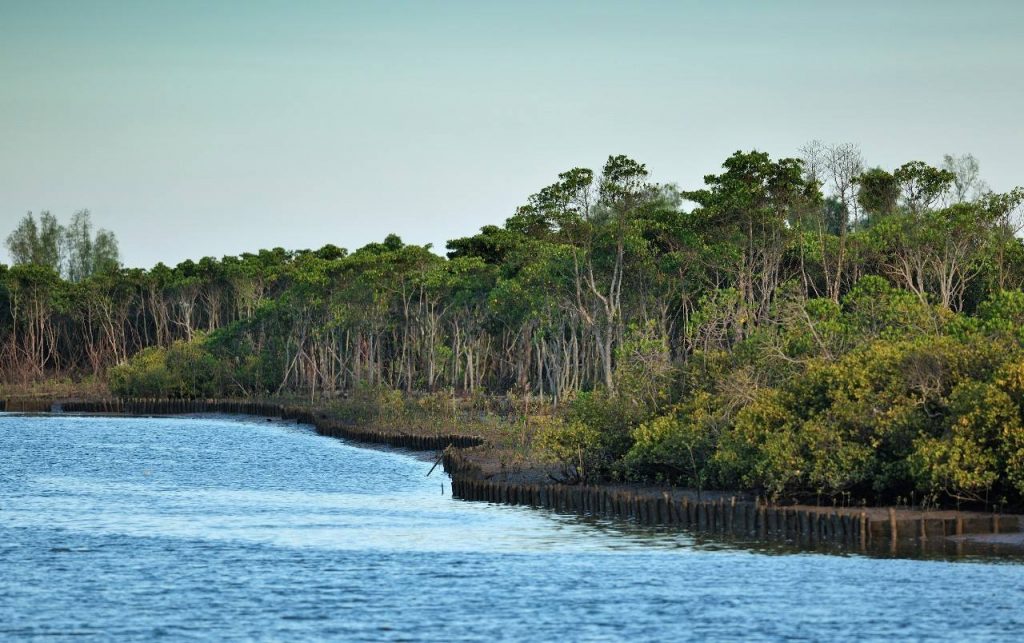
Mangroves are a very special plant, which will not die even bathed in the salt of high concentration. There are mainly three characters as follows. The first is the special root. The root is from the basis of the trunk, which grows into dense ones and dips into mud. Some of them have a very huge basis so the trunks are enlarged and widened, which develop into the formation of plate-liked roots. Mangroves have soft green leaves, and dense canopy, and they are very strong. The well-developed plexus-form roots which are exposed on the ground are thick and long, and twist tightly with each other. That’s why theyare stubborn and can fight against storms. They are the natural barriers and have been called the “Coast Guard”. The second is a unique viviparous phenomenon. The fruits do not fall off the trees when they are mature. And the seeds grow up. When they sprouts, they fall onto the ground and root into it. The third is that the skin of its leaves is able to discharge salt and to reduce the loss of water by evaporation at the same time. So the mangrove is an important symbol at the tropical seashore. Hence we may say that they are of important economic, medical value.
In Dongzhaigang, we can find the well-grown and dense mangrove in the forest park in the sea. ln most times, the tide ebbs and flows twice a day. When the tides ebb, we can see the root of the mangrove and the mud land. The treetrunks stand as firm as a rock in the sea. At high tide, mangrove bath in the warm waters, but the green crown flaunting in the breeze, become a spectacular “forest on the sea”. Dongzhaigang has a mangrove tree of an area of about 10 square meters. The diameter of its trunk is only about thirteen centimeters and just about three or four meters high, but it is more than a hundred years old. More than 400 brace roots are out of it like a small forest. The local people have vividly described it as “the cover of the cage”. In the revolutionary time, Dongzhaigang Mangrove was the “Green Great Wall “which served people like a guard. The Party Committee of northern Hainan Prefecture and Qiongshan County is located in this area. They fight with the enemy by the cover of the dense forest.
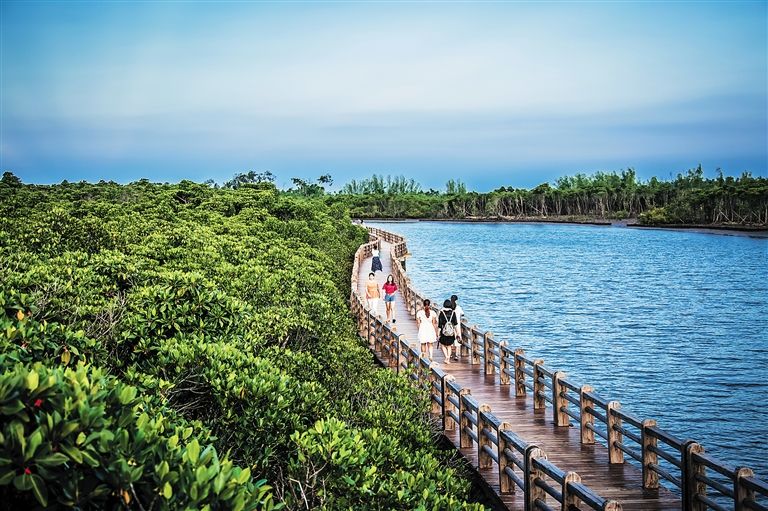
When we appreciate “forest on the sea”, we can also pay a visit to the Benthonic Villages in the protection zone which came into being because of the violent earthquake that happened in Qiongzhou. According to Qiongzhou Government Record and some local genealogies of Yanfeng Town and Yanha Town, Dongzhaigang used to be a shallow gully that was about three meterswide. In 1605,a terrible earthquake about 7.5 magnitudes happened and the intensity in Dongzhaigang was 10 degrees. Suddenly the land sank into the sea,72 villages were ruined, and as a result,a vast ocean took shape which we called Dongzhaigang today. When the weather is good, and the sea water is clear and smooth, we can see the subsidence of mortar pile, grave, arch and stone bridge, etc. in the bottom of the village remains well. The subsidence from land to sea that resulted from the earthquake is unique in China and also is a rare phenomenon in the world.
